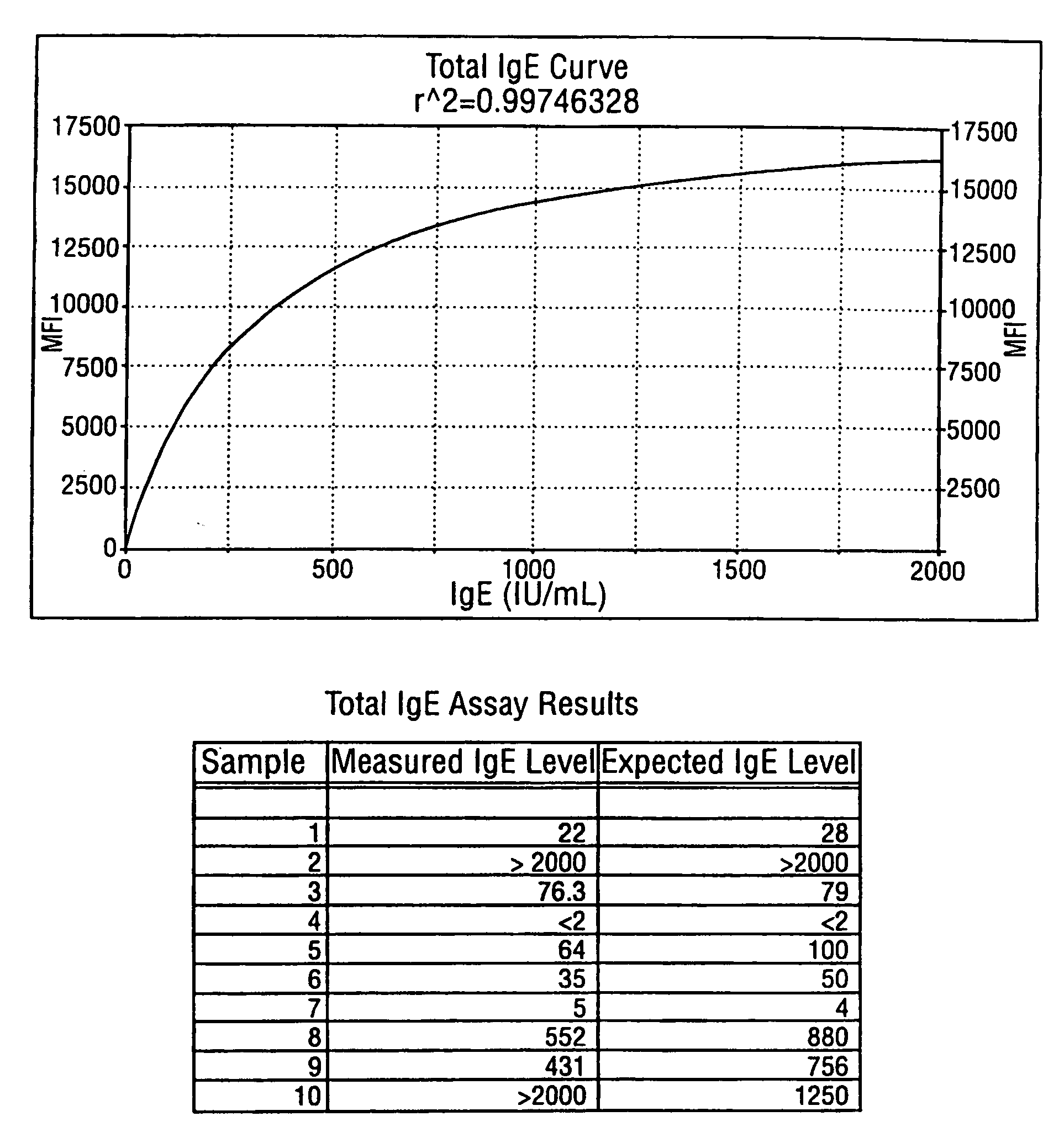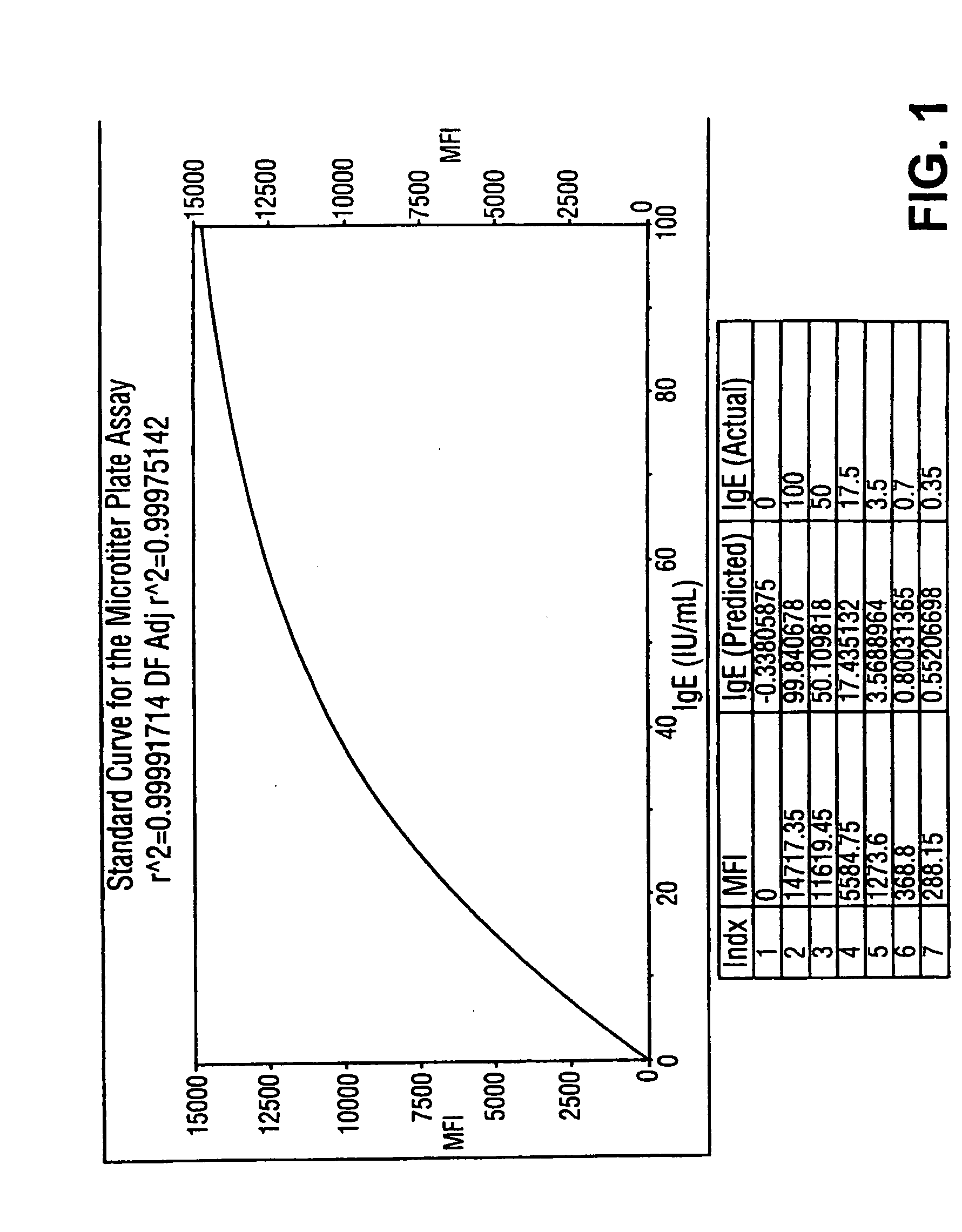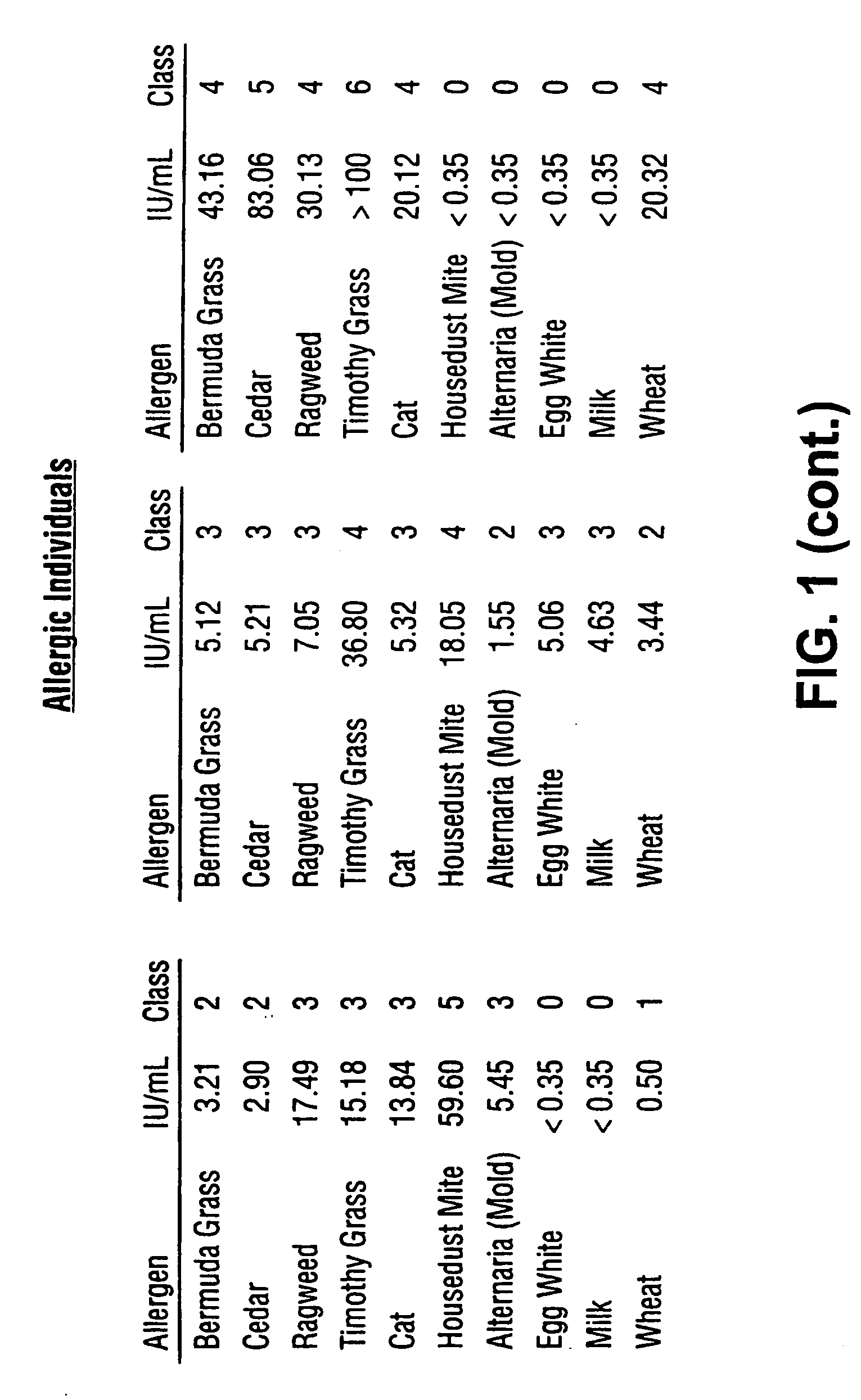Homogeneous immunoassays for multiple allergens
a technology of immunoassay and allergen, applied in the direction of chemical reaction analysis, material testing goods, instruments, etc., can solve the problems of inability to perform multiple allergens, large differences in technique and interpretation, and allergic reactions of persons
- Summary
- Abstract
- Description
- Claims
- Application Information
AI Technical Summary
Benefits of technology
Problems solved by technology
Method used
Image
Examples
example 1
Assay for Specific IgE Levels to Allergens
[0087]Subsets of fluorescently labeled microspheres obtained from Luminex Corporation were covalently coupled with Alternaria mold, Bermuda grass, Timothy grass, Cat dander, Mountain Cedar tree, Egg white, Milk, Wheat, Ragweed and Mite extracted proteins. Serum samples obtained from atopic and non-atopic individuals were assayed against this panel of ten allergens. A 5 μL sample was added to 10 μL of suspended allergen-coupled microspheres placed in V-bottom polypropylene microtiter wells (Evergreen Scientific, CA, USA) or 0.5 mL polypropylene microfuge tubes (Evergreen Scientific, CA, USA). For the six point standard curve, 5 μL of serum standards (secondary standards calibrated against the WHO IgE Standard 75 / 502) were each added to 10 μL of antigen-coated microspheres in microtiter wells. The microtiter plate was placed on a microtiter plate shaker (Fisher Scientific, PA, USA) and shaken for 10-20 seconds. Microspheres with standards or s...
example 2
TOTAL IgE ASSAY
[0089]Goat anti-human IgE (Bethyl Laboratories, TX, USA) was coupled to microsphere particles (Luminex Corporation, TX, USA) following the same procedure described above for coupling allergens. Serum samples were obtained from individuals obtained by the methods described above. A 1.0 μL volume of standard (secondary standards calibrated against the WHO IgE Standard 75 / 502) or individual sample was added to 25 μL of suspended microspheres coupled with antibody in microtiter wells, briefly shaken as described above and incubated for 1 hour. A 40 μL volume of anti-human IgE-biotin conjugate was subsequently added to the contents of each well and incubated for 1 hour. Subsequently, a 40 μL volume of streptavidin-Riphycoerytherin conjugate was added to the contents of each well, the mictrotiter plate briefly shaken and the mixture incubated for 1 hour. The microspheres were then directly introduced to the Luminex 100 Flow cytometer for aspiration into the instrument which...
PUM
 Login to View More
Login to View More Abstract
Description
Claims
Application Information
 Login to View More
Login to View More - R&D
- Intellectual Property
- Life Sciences
- Materials
- Tech Scout
- Unparalleled Data Quality
- Higher Quality Content
- 60% Fewer Hallucinations
Browse by: Latest US Patents, China's latest patents, Technical Efficacy Thesaurus, Application Domain, Technology Topic, Popular Technical Reports.
© 2025 PatSnap. All rights reserved.Legal|Privacy policy|Modern Slavery Act Transparency Statement|Sitemap|About US| Contact US: help@patsnap.com



